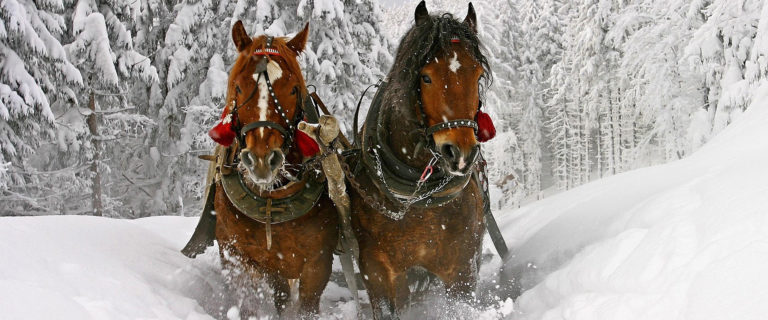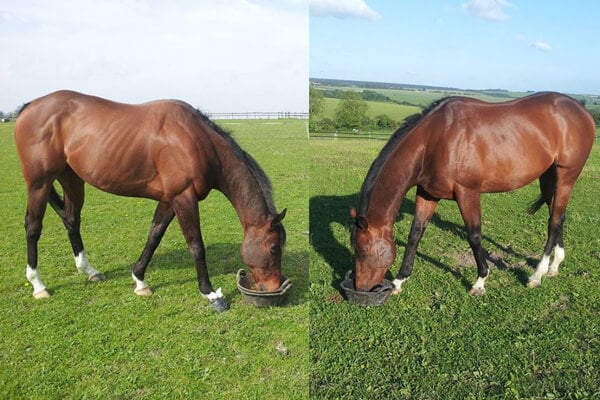Your Essential Autumn/Winter Horse Checklist
As the temperatures drop and the leaves begin to fall, it’s time to prepare your equine partner for the long winter months ahead. In this ultimate autumn/winter horse checklist, we will guide you through all the essential steps to ensure a smooth transition for you and your horse during the colder season. At Aloeride, we understand the importance of looking after every aspect of your horse’s care this autumn/winter, from adjusting feeding routines to providing adequate shelter, so here are our tips for keeping your horse healthy and happy: your essential Autumn/Winter horse checklist.
The Importance of preparing your horse for winter
Preparing your horse for winter is crucial for your horse’s well-being and throughout the colder months. As temperatures drop, horses face various challenges, including colder weather, undesirable arena and ground conditions, reduced grazing opportunities, reduced exercise opportunities, and potential health risks. By planning ahead for challenging weather, you can create a plan and set the foundation for a successful winter riding season.
First and foremost, by planning ahead and reviewing your horse’s needs, you can help support a stronger immune system, making them less susceptible to illnesses and infections. Feeding Aloeride plays a supporting role in healthy equine digestion, coat, skin and hooves. The transition from autumn to winter can be stressful for horses, and a weakened immune system can make them more vulnerable to respiratory issues and other illnesses. By providing the proper nutrition, adequate shelter, and healthcare, you can help boost your horse’s immune system and keep them healthy.
Preparing your horse for winter also ensures their comfort and happiness. Just like humans, horses can feel the effects of colder temperatures. You can ensure your horse is comfortable throughout the winter by addressing their basic needs, such as warmth, shelter, and proper nutrition.
Horse owners who plan also help maintain their horse’s physical condition and performance levels during the colder months. Horses can quickly lose weight, muscle tone, and overall fitness during winter without proper attention and care. By implementing the necessary adjustments to their feeding, exercise, and grooming routines, you can help your horse stay healthy and fit.
Winter horse care basics on your autumn/winter horse checklist
When it comes to winter horse care basics alongside providing adequate shelter, adjusting feeding routines, implementing appropriate grooming and coat care is an important consideration. Looking after your horse’s coat and skin is particularly important given the weather conditions, the length of time, and the fact that most horses will wear rugs.
Grooming your horse daily increases blood flow, removes dirt and dust, and allows you to check your horse for any cuts or scrapes that could lead to infection. Checking your horse thoroughly also will enable you to check for early signs of mud fever or rain scolding.
Shelter and stabling considerations for the winter season
During the winter, horses still require shelter. Shelters protect your horse from cold winds, rain, and snow. A well-designed horse shelter should provide ample ventilation while offering protection from the elements and be large enough for your horse and the field herd to move around comfortably and lay down. Additionally, you can add bedding to provide insulation and keep your horse warm.
Inadequate ventilation in the shelter can quickly lead to respiratory issues, so it’s essential to strike a balance between insulation and proper airflow. Regularly check the shelter for any signs of damage or leaks and make necessary repairs.
Stable ventilation is also an important consideration if your horse spends time inside. Good drainage is essential, and so is your bedding choice for hygiene and cleanliness. Daily mucking dirty bedding helps to prevent the buildup of ammonia and bacteria, which can lead to respiratory issues and thrush in your horse’s feet, compromising healthy hooves.
Check tack and rugs regularly
Check your horse’s tack and rugs for wear and tear and ensure that they continue to fit correctly and comfortably. Some horses can drop off weight more quickly in the autumn, so keep an eye on your saddle fit. With prolonged wear, dirty rugs can begin to create sores and rug rubbing, so keep your rugs rotated and clean to help prevent any issues.
Review your horse’s feeding routine
Your horse’s nutritional needs will likely change over the autumn and winter, so review what you feed and adjust accordingly. Summer nutritionmay also be adapted to make room for supplements with greater digestive support and for supporting hoof health in wet weather.
Exercise for the weather
Sometimes during winter, it is impossible to ride or exercise your horse safely in wintery conditions. If you can turn your horse out for a few hours in the field, this is desirable. If your horse is forced to stay inside, then walking in hand (if safe to do so) will at least give him a leg stretch until normality can resume. If you know bad weather is coming, plan with extra supplies, hay nets pre-filled, stable toys at the ready and a radio to keep your horse company.
More Tips & Advice? Read 7 Winter Horse Care Hacks & Tips







